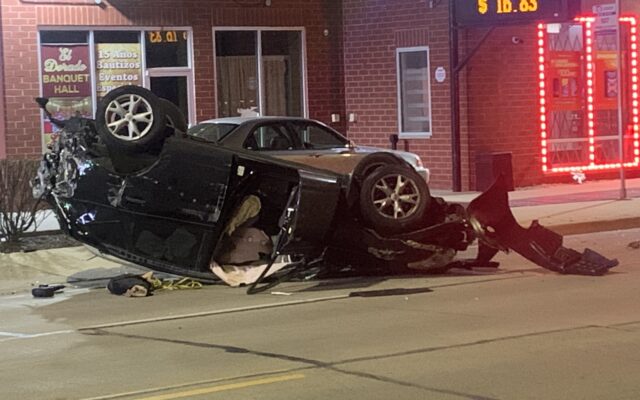State Public Health Officials Announce COVID-19 Resurgence Mitigations to Take Effect in Regions 4 and 10 on October 28, 2020

Every Region Seeing Increased Positivity Rates; Administration Working with Local Officials, Health Departments to Prevent Further Spread
Governor Pritzker and the Illinois Department of Public Health (IDPH) are announcing COVID-19 resurgence mitigations will be implemented in Regions 4 and 10, which encompass Metro East and Suburban Cook County respectively, beginning at 12:01 am on Wednesday, October 28, 2020. Region 4 has had a 7-day rolling average test positivity rate of 8 percent or above for three consecutive days. Region 10 has had eight consecutive days of increases in test positivity and seven days of increased hospital admissions making it the first region in the state to meet the metrics for additional mitigations in this way and surpass warning levels in two categories simultaneously. The sustained increases seen in the regions exceed the thresholds set for establishing mitigation measures under the state’s Restore Illinois Resurgence Plan.
The administration continues to work aggressively to support small businesses impacted by the ongoing pandemic, distributing $7.5 million and $14.8 million respectively in emergency grants and assistance to businesses and communities in Regions 4 and 10 alone. Businesses in the regions will also receive priority consideration for the current round of Business Interruption Grants as a result of the additional mitigations.
“Over the weekend, two more regions – Region 4, Metro East, as well as Region 10, Suburban Cook County – triggered our metrics for additional mitigations, meaning that, starting Wednesday, 6 of our 11 regions will be operating under our resurgence framework,” said Governor JB Pritzker. “Much like the four areas already operating under Tier One or Tier Two of the plan – Northwestern Illinois, Southern Illinois, and Will, Kankakee, DuPage and Kane Counties – Region 4 triggered our 8 percent positivity average threshold, the second time it has done so since mid-summer. Region 10, on the other hand, is the first region in Illinois to earn additional mitigations not because of its positivity rate alone, but because its positivity rate and its COVID-related hospitalizations have both seen a sustained increase over the last 10 days.”
“We are seeing test positivity across the state increase, but for Region 10, Suburban Cook County, we are also seeing a steady increase in hospitalizations for COVID-like illness,” said IDPH Director Dr. Ngozi Ezike. “At the beginning of the pandemic, we were concerned about overwhelming our hospitals and we must take action now to prevent that possibility. We are entering flu season and our hospitals are facing both COVID-19 and flu admissions. The same things that can help prevent the spread of COVID-19 will help prevent the spread of flu. Please, wash your hands, watch your distance, and wear your mask. And make sure to get your flu shot.”
Mitigation measures taking effect October 28 in Regions 4 and 10 include:
Bars
- No indoor service
- All outside bar service closes at 11:00 p.m.
- All bar patrons should be seated at tables outside
- No ordering, seating, or congregating at bar (bar stools should be removed)
- Tables should be 6 feet apart
- No standing or congregating indoors or outdoors while waiting for a table or exiting
- No dancing or standing indoors
- Reservations required for each party
- No seating of multiple parties at one table
Restaurants
- No indoor dining or bar service
- All outdoor dining closes at 11:00 p.m.
- Outside dining tables should be 6 feet apart
- No standing or congregating indoors or outdoors while waiting for a table or exiting
- Reservations required for each party
- No seating of multiple parties at one table
Meetings, Social Events, Gatherings
- Limit to lesser of 25 guests or 25 percent of overall room capacity
- No party buses
- Gaming and Casinos close at 11:00 p.m., are limited to 25 percent capacity, and follow mitigations for bars and restaurants, if applicable
These mitigations do not currently apply to schools.
Support for small businesses has been one of the central features of the Pritzker administration’s COVID-19 response. Since March, the administration has launched a menu of small business and community relief programs – with over $500 million in grants and programs launched by the Illinois Department of Commerce and Economic Opportunity (DCEO), including emergency hospitality grants, a downstate small business stabilization program, Fast Track Capital, and more.
DCEO is also actively processing reimbursements for local governments impacted by COVID-19 via the state’s local CURES program. All eligible governments in Regions 4 and 10 can submit their certification to the department and begin submitting reimbursement requests. For more information on programs available for businesses and communities, please visit DCEO’s website.
In the coming days, IDPH will continue to track the positivity rate in both regions to determine if mitigations can be relaxed, if additional mitigations are required, or if current mitigations should remain in place. If the positivity rate in Region 4 averages less than or equal to 6.5% for three consecutive days, then the region will return to Phase 4 mitigations under the Restore Illinois Plan. If the positivity rate averages between 6.5% and 8%, the new mitigations will remain in place and unchanged. If the positivity rate averages greater than or equal to 8% after 14 days, more stringent mitigations can be applied to further reduce spread of the virus.
If the positivity rate in Region 10 averages less than or equal to 6.5% over a three-day period, there is a decrease in hospital admissions for COVID-19 like illness over a three-day period, and the three-day rolling averages of ICU bed availability and medical/surgical bed availability is greater than or equal to 20% over a seven-day period, the region will return to Phase 4 mitigations under the Restore Illinois Plan. Conversely, if the average positivity rate continues to increase over seven out of 10 days and the hospital admissions for COVID-19 like illness continues to increase over seven out of 10 days, more stringent mitigations can be applied. If the metrics remain stable, the region will continue to be monitored.
Currently four of the state’s 11 regions have positivity rates above the public health department’s 8% threshold for resurgence mitigations. Regions 5, 7, and 8 are currently operating under additional mitigations as the regions continue to report a 7-day rolling positivity rate above 8%. Region 1 is currently operating under Tier 2 mitigation measures after experiencing reporting a positivity rate greater than 8% for 14 days despite Tier 1 mitigation measures being in place.
As part of the administration’s robust response to the pandemic, the state continues to strengthen its nation-leading testing operation. Illinois is averaging more than three times the testing than the average state. Testing is readily available throughout the state, and the vast majority of test results are returned within an actionable period. Moving forward, testing remains a critical step to reduce the spread of the virus, given that a positive test result begins the contact tracing process and can prevent further spread in communities.
In addition to testing, IDPH continues to monitor each region in the state for several key indicators to identify early, but significant increases of COVID-19 transmission in Illinois, potentially signifying resurgence. Indictors include an increase in the region’s positivity rate with a simultaneous increase in either hospital admissions for COVID-like-illness or a decrease in hospital capacity, or three consecutive days of greater than or equal to 8% test positivity rate (7-day rolling average). These indicators can be used to determine whether additional community mitigation interventions are needed for a region to prevent the further spread of COVID-19.
A full list of mitigation measures pertaining to some businesses and industries may be found on the Illinois Department of Commerce and Economic Opportunity (DCEO) website at www.dceocovid19resources.com/restore-illinois.






